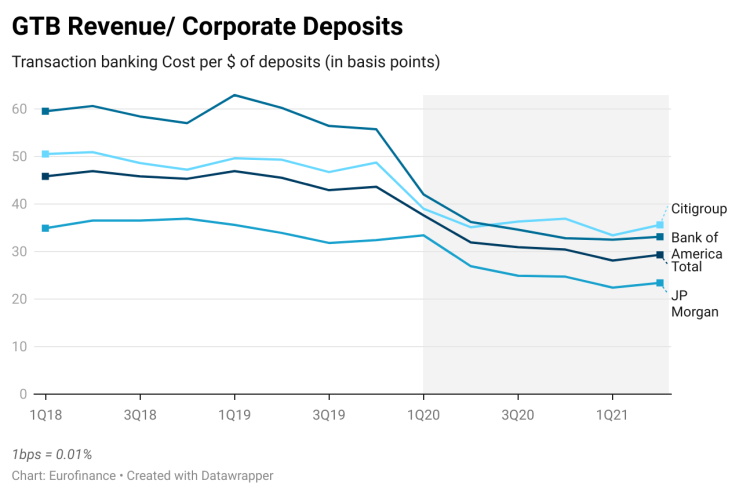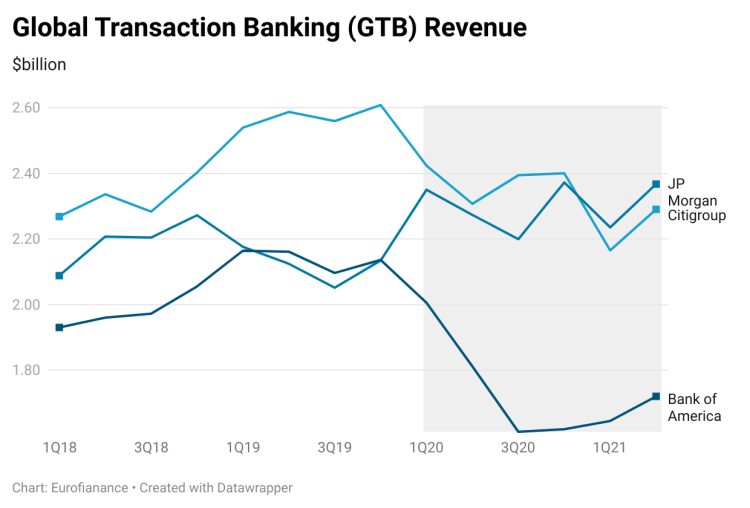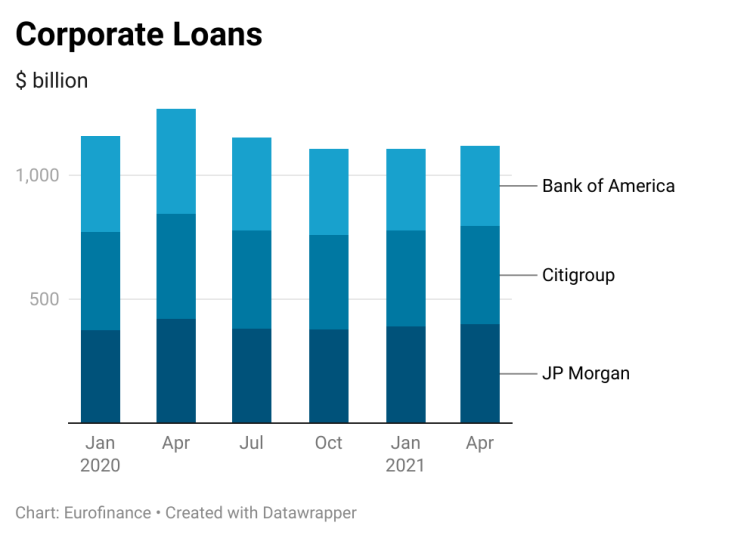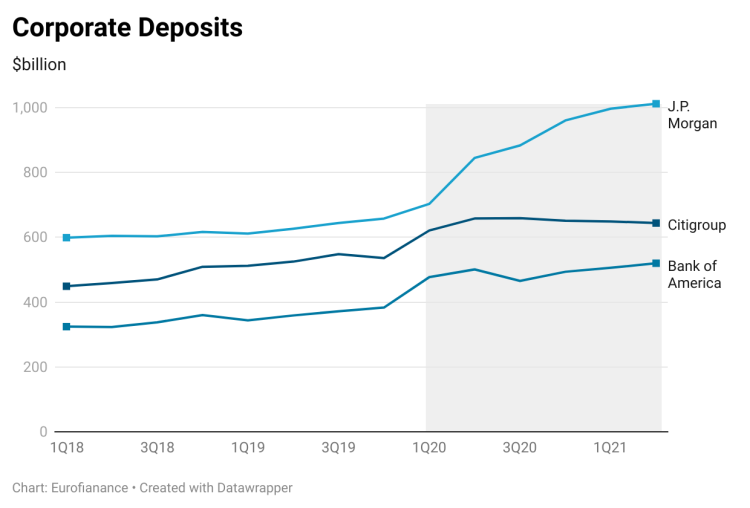Digital transformation increases banking costs for corporates

Treasurers are clamouring for digital services from their transaction banks but it’s costing them more, EuroFinance analysis shows
As treasurers automate their processes, they expect their banks to keep up with APIs, eBAM and other digital transformations. The hope is that eliminating manual steps in bank account management will reduce costs, as banks harvest digital efficiencies and pass the benefits to customers. But is this happening in reality? It is possible to measure the average unit cost of transaction banking by dividing transaction banking revenues by corporate deposits. EuroFinance has done this for the three largest US banks – Citi, Bank of America and JP Morgan
No free lunch: Better tech at a cost
At the onset of the pandemic, as corporates deployed their cash into safe havens, deposits at US banks surged by 33% to $2.1 trillion at the end of 2020, on the contrary global transaction banking (GTB) revenue declined by 7% during the same time period. This resulted in the GTB revenue/Corporate deposit ratio touching a two year low of 28bps (or .28%) in the first quarter of 2021, representing that for every million dollars deposited, an average transaction banking fee of $2,800 was charged by banks to their corporate clients.
However, the metric rebounded to 29bps in Q2 2021, 4% higher than the previous quarter. This was led by Citigroup which charged 35.5bps, 7% higher during the same time period, followed by JP Morgan and Bank of America as the metric rose by 4.3% and 2% respectively.

Banks justify higher fees with their rising investments in technology. Less clear for corporate treasurers is how much of a margin is being paid to bank shareholders.
Citigroup recorded a 5.7% rise in the transaction banking fees in Q2 to $2.3 billion as trade finance flows picked up during the quarter on the back of inventory build-up by corporates as the global economy reopens.
The emphasis on digital transformation was echoed by Jane Fraser, CEO at Citigroup, “[We are] investing in the infrastructure we need to serve our clients in an increasingly digital world” Fraser said during a July 14th earnings call
The company which moves $4 trillion of volumes a day saw an accelerating momentum across its payments business with 13% growth in cross-border flows and 10% growth in clearing volumes over the past year.

Similar trends were observed for Citi’s rivals Bank of America (BOfA) and JP Morgan as they recorded $1.7 billion and $2.3 billion in GTB revenue in Q2, 4.6% and 6% higher than the previous quarter.
“This was a quarter of reopening where both our high-tech and high-touch capabilities delivered growth in client activity…We also saw increased sales through digital channels, which suggests increases in digital engagement are here to stay.” said Paul Donofrio, CFO at BOfA during a July 14 investor call.
Digitization helped the BOfA capture greater market share in wholesale banking as corporate clients engaged more with banks that have the capability to invest in new technologies that will provide better data and global integrated solutions. “We continued our investments in digital solutions that deliver the efficiencies for both clients and our employees” Donofrio continued.
Citi used to lead the US banks in generating the highest transaction banking revenue but continued efforts by JP Morgan to innovate in this space reaped benefits as it overtook its rival in the first quarter of 2021. JP Morgan CEO Jamie Dimon said during an earnings call that the bank was taking a more forward-looking approach in monetizing this trend.
These investments in digital have not just helped banks improve services but also boosted the net income earned from their transaction banking operations. Although Citi doesn’t regularly bifurcate the net income from the Treasury and Trade Solutions (TTS) division, Naveed Sultan, Global head of TTS disclosed in an investor conference in 2020 that the business contributed 20% to Citi’s bottom line ($3.88 billion) in 2019 as compared to $3 billion in 2017.
Pick up in Loans
At the height of the pandemic, as corporates drew dawn on loans to build their liquidity, the successive three quarters were followed by a period of deleveraging as the loan balances declined by $160 billion dollars. However, this diverged in the second quarter as corporate loans jumped by $12 billion to $1.12 trillion during the quarter.

Citigroup lent an additional $9 billion to corporates, taking its loans balance to $396 billion at the end of Q2. The company said that the main driver of loans was the improving macroeconomic conditions which resulted in higher client demand.
On the contrary, the loans balance at Bank of America declined by 1.2% to $325 billion at the end of the quarter as facilities drawn down during the pandemic were repaid. “The revolver utilization is still at historic lows, but we would expect that to move up as the economy improves”, CFO Paul Donofrio said.
Meanwhile, deposits continued to rise but at a slower pace as corporates invested cash in money funds to earn a higher yield, as per an analysis by EuroFinance. JP Morgan was the first bank to surpass the trillion dollar mark in corporate deposits as the metric surged by 1.5% to $1.012 trillion at the end of the second quarter.
